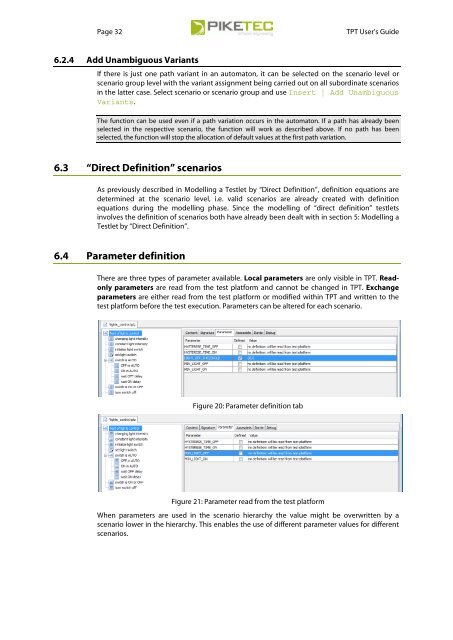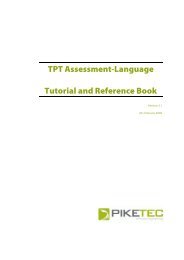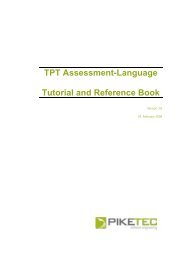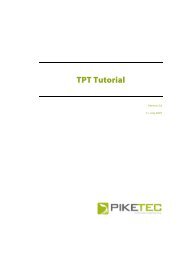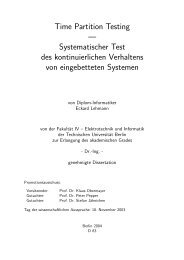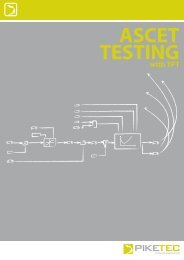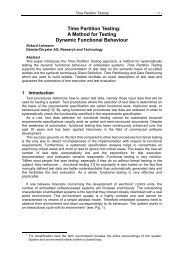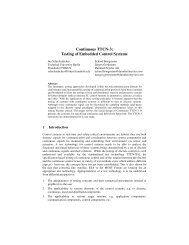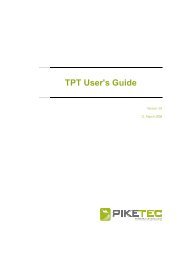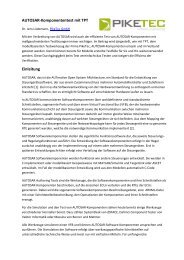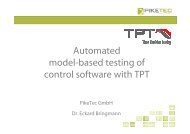TPT User's Guide - PikeTec
TPT User's Guide - PikeTec
TPT User's Guide - PikeTec
Create successful ePaper yourself
Turn your PDF publications into a flip-book with our unique Google optimized e-Paper software.
Page 32 <strong>TPT</strong> User’s <strong>Guide</strong><br />
6.2.4 Add Unambiguous Variants<br />
If there is just one path variant in an automaton, it can be selected on the scenario level or<br />
scenario group level with the variant assignment being carried out on all subordinate scenarios<br />
in the latter case. Select scenario or scenario group and use Insert | Add Unambiguous<br />
Variants.<br />
The function can be used even if a path variation occurs in the automaton. If a path has already been<br />
selected in the respective scenario, the function will work as described above. If no path has been<br />
selected, the function will stop the allocation of default values at the first path variation.<br />
6.3 “Direct Definition” scenarios<br />
As previously described in Modelling a Testlet by “Direct Definition”, definition equations are<br />
determined at the scenario level, i.e. valid scenarios are already created with definition<br />
equations during the modelling phase. Since the modelling of “direct definition” testlets<br />
involves the definition of scenarios both have already been dealt with in section 5: Modelling a<br />
Testlet by “Direct Definition”.<br />
6.4 Parameter definition<br />
There are three types of parameter available. Local parameters are only visible in <strong>TPT</strong>. Readonly<br />
parameters are read from the test platform and cannot be changed in <strong>TPT</strong>. Exchange<br />
parameters are either read from the test platform or modified within <strong>TPT</strong> and written to the<br />
test platform before the test execution. Parameters can be altered for each scenario.<br />
Figure 20: Parameter definition tab<br />
Figure 21: Parameter read from the test platform<br />
When parameters are used in the scenario hierarchy the value might be overwritten by a<br />
scenario lower in the hierarchy. This enables the use of different parameter values for different<br />
scenarios.


